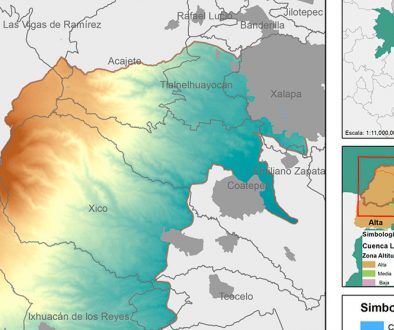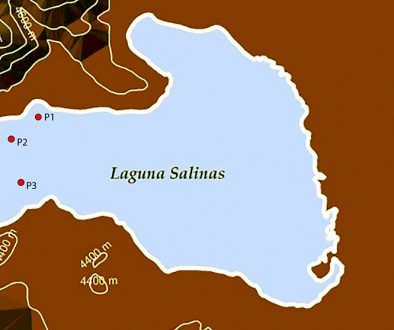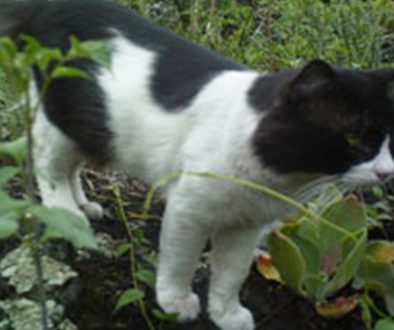Vehicular impact as a source of wildlife mortality in the Western Pacific Coast of Mexico
Carlos Delgado-Trejo a, Rubén Herrera-Robledo a, Nabil Martínez-Hernández a, Cutzi Bedolla-Ochoa a, Catherine E. Hart b, Javier Alvarado-Díaz a, Ireri Suazo-Ortuño a, Héctor Nava-Bravo a, Leonel Lopez-Toledo a, Eduardo Mendoza a, *
a Instituto de Investigaciones sobre los Recursos Naturales, Universidad Michoacana de San Nicolás de Hidalgo, Ave. San Juanito Itzícuaro s/n, Col. Nueva Esperanza, 58330 Morelia, Michoacán, Mexico
b Centro Universitario de la Costa, Universidad de Guadalajara, Av. Universidad de Guadalajara 203, Delegación Ixtapa, 48280 Puerto Vallarta, Jalisco, Mexico
*Corresponding author: mendoza.mere@gmail.com (E. Mendoza)
Abstract
Road construction produce abrupt changes in landscape topography, microclimate, vegetation cover and levels of traffic noise. Moreover, road networks negatively affect vertebrate abundance, population gene flow, animal behavior and individual survival. Between July 2010 and January 2011, we conducted 10 surveys of animals killed on a road in Michoacán, Mexico. We recorded a total of 314 animals killed which included: 15 species of reptiles, 13 of mammals, 9 of birds, and 1 amphibian. Mammals were the most impacted accounting for 65% of the road kills followed by reptiles (25%). Mortality concentrated on road sections combining low sinuosity with high forest cover. Of the 15 reptile species recorded, 6 were endemic and 10 were listed as globally threatened or subject to special protection in Mexico. Road killed mammals also included species of conservation concern, 3 of which were endemic to Mexico. Our findings confirm that roads are a major mortality source for wild fauna. Strategies are greatly needed, at the global and local level, to mitigate the impact of roads on biodiversity.
Keywords:
Human impacts; Michoacán; Road kill; Vertebrates
© 2018 Universidad Nacional Autónoma de México, Instituto de Biología. Este es un artículo Open Access bajo la licencia CC BY-NC-ND
Impacto vehicular como fuente de mortalidad de fauna silvestre en la costa occidental del Pacífico de México
Abstract
La construcción de caminos produce cambios drásticos en la topografía, microclima, cobertura vegetal y los niveles de contaminación por ruido. Asimismo, afecta negativamente la abundancia de la fauna silvestre, el flujo génetico entre sus poblaciones, su conducta y en última instancia su supervivencia. En 10 muestreos realizados entre julio del 2010 y enero del 2011, recopilamos información sobre la mortalidad de vertebrados en una carretera de la costa de Michoacán. Registramos un total de 314 animales atropellados que incluyeron: 15 especies de reptiles, 13 de mamíferos, 9 de aves y 1 de anfibio. Los mamíferos tuvieron más individuos atropellados (65% del total) seguidos por los reptiles (25%). La mortalidad se concentró en las rectas de la carretera que tuvieron una mayor cobertura de bosque a su alrededor. De las 15 especies de reptiles registradas, 6 fueron endémicas y 10 globalmente amenazadas o sujetas a protección especial en México. Asimismo, 3 especies de mamíferos fueron endémicas de México y de preocupación para su conservación. Nuestros resultados confirman la evidencia de que las carreteras son un factor causante de una alta mortalidad entre la fauna silvestre. Se requiere urgentemente de estrategias a nivel local y global que permitan mitigar este impacto.
© 2018 Universidad Nacional Autónoma de México, Instituto de Biología. This is an open access article under the CC BY-NC-ND license
Palabras clave:
Impactos humanos; Michoacán; Atropellamientos; Vertebrados
Introduction
Roads are an increasingly ubiquitous sign of landscape anthropization across the globe even in regions supporting very fragile ecosystems. There is no question that roads are an important element within territory integration, but plenty of evidence exists showing that their construction and operation bring about a myriad of impacts over natural ecosystems and biodiversity (Laurence et al., 2014; Van der Ree et al., 2015). Road construction can produce abrupt changes in landscape topography, vegetation cover, microclimate, pollution inflow, hydrological dynamics, soil erosion, sediment deposition and traffic noise (Coffin, 2007; Forman & Alexander, 1998; Spellerberg, 1998). Moreover, road networks reduce vertebrate abundance (Fahrig & Rytwinski, 2009) alter population gene flow (Epps et al., 2005), affect animal´s behavior (Parris & Schneider, 2009; Parris et al., 2009), increase individual´s mortality (Hels & Buchwald, 2001; Taylor & Goldingay, 2004) and favor the spread of alien species.
Roedenbeck et al. (2007) put forward a research agenda aimed at furthering our understanding about the negative impacts that roads have on wildlife. This agenda focused on the following 5 questions: 1) Under what circumstances do roads affect population persistence? 2) What is the relative importance of road effects vs. other impacts on population persistence? 3) Under what circumstances can road effects be mitigated? 4) What is the relative importance of the different mechanisms by which roads affect population persistence? and 5) Under what circumstances do road networks affect population persistence at the landscape level? Over the last years several efforts have been made to try to answer these questions, however, we are still in need to obtain a more geographically balanced view of the magnitude and characteristics of the impact of road networks on wildlife. Most of the studies currently available have been conducted in the USA, Europe and Oceania, whereas studies from tropical regions are still scant. This lack of balance is exemplified by the fact that 2 special issues, published in 2000 and 2010, which focused on reviewing the ecological impacts of roads, included no studies from tropical latitudes (Trombulak & Frissell, 2000; Van der Ree et al., 2011). A deeper understanding of the characteristics and magnitude of road impact on tropical wildlife is particularly urgent due to the high vertebrate biodiversity and anthropogenic threat occurring therein (Laurance et al., 2009).
The general goals of this study were threefold. Firstly, to contribute with a more geographically balanced view of the magnitude and characteristics of wildlife mortality caused by roads. Secondly, to evaluate to what extent road mortality contrasts among different vertebrate groups. And finally, to evaluate how different landscape and road traits affect wildlife mortality.
Materials and methods
This study was conducted on the road running along the Pacific coastal plain in the state of Michoacán, western Mexico (Fig. 1). This two-lane road crosses the municipalities of Lázaro Cárdenas, Aquila and Coahuayana, which are located within the physiographic province of the Sierra Madre del Sur (Correa, 1974). The specific section of the road we studied was the 210 km located between the towns of Acalpican and Coahuayana (Fig. 1). This section of the road is surrounded by a modified landscape consisting of mostly small human settlements (50-200 inhabitants) with the exception of La Placita de Morelos (1,500 inhabitants), tracts of well-conserved forest, secondary vegetation and lands destined to cattle pasture and to a variety of crops. Monthly average temperature in this region is 26 °C and annual precipitation ranges from 600 to 800 mm. Main vegetation types found in the coastal region of Michoacán include: a) tropical dry forest, b) tropical sub-deciduous forest, c) riparian forest, d) savanna, and e) wetlands.
We conducted 10 surveys to search for animals killed (amphibians, reptiles, birds and mammals). All surveys were conducted between July 2010 and January 2011 early in the morning to avoid repetitive damage of animals by passing vehicles. The road was travelled in a vehicle moving at a constant speed of 60 km/hour, slow enough to reduce the probability of missing killed animals the size of a rodent, but still fast enough to reduce interference with other vehicles. Every time a killed animal was detected on the road the vehicle was pulled over in the nearest safe place and members of our team approached the animal by foot wearing orange safety vests and gloves. Whenever it was possible animals were identified on site using field guides. When this was not possible, animal carcasses were collected and taken to the lab for a more careful inspection. All the animals were removed from the road to avoid recording the same animal more than once. The location of each animal kill was recorded with a GPS.
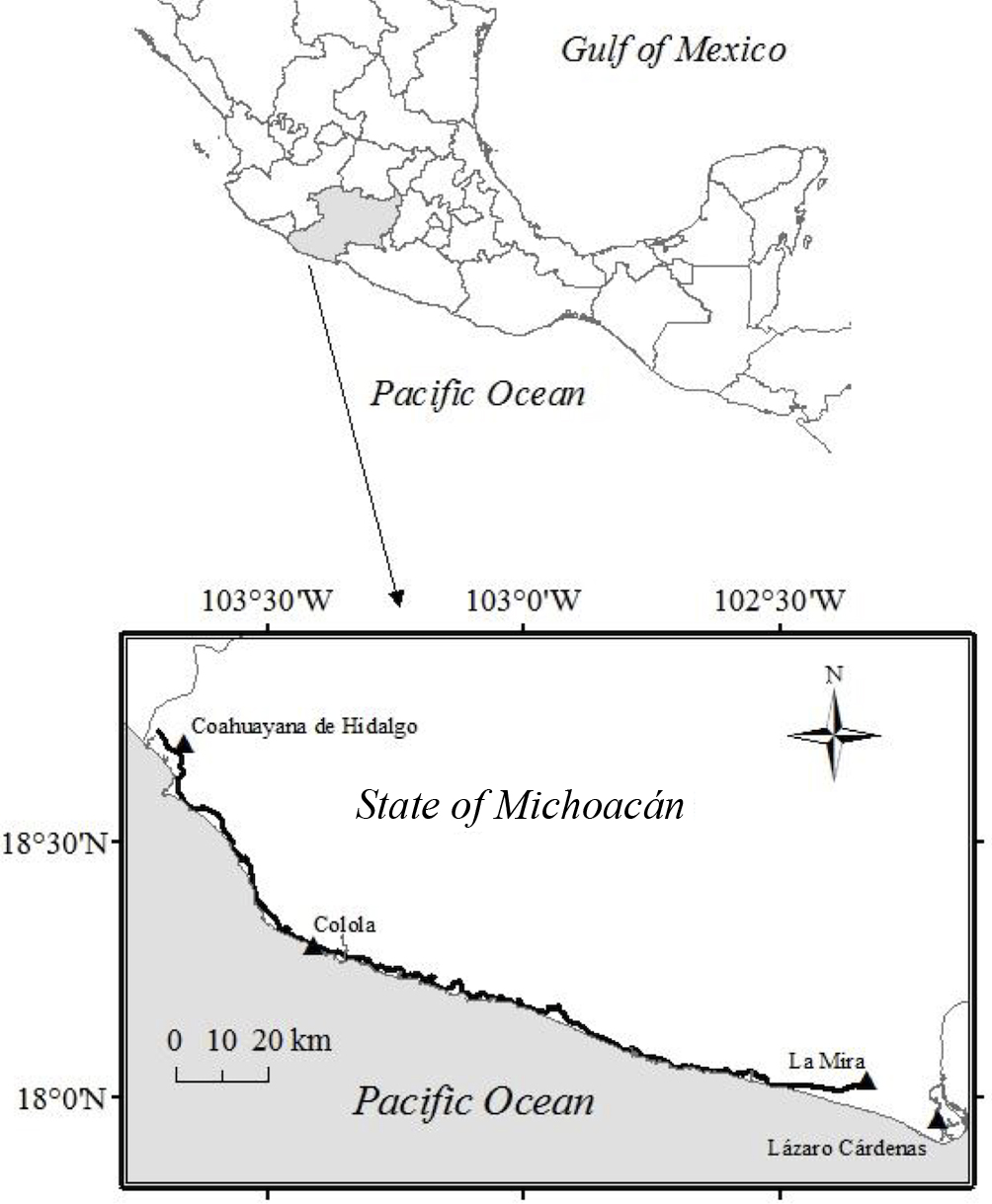
We compiled information about the following landscape variables for our study area: 1) percentage of tree cover from the 2010 MODIS vegetation continuous field product with a pixel resolution of 250 × 250 m (DiMiceli et al., 2011); 2) altitude, derived from a digital elevation model with a pixel resolution of 30 × 30 m (Inegi, 2011a); river and road location from maps scale 1: 50,000 (Inegi, 2011b) and human population density, derived from the interpolation of the 2010 National Census data using Arc Map tools (ESRI, 2011).
To analyze the relative contribution by different species of killed individuals within each vertebrate group, we constructed rank-abundance graphs (Mueller-Dombois & Ellenberg, 1974). We applied analysis of covariance to compare slopes of fitted logarithmic regression models, among species, as a way to contrast species evenness (Izsák, 2006).
Moreover, we assessed the completeness of the inventory of each vertebrate group by calculating the percentage that the total number of species recorded represented the species richness estimated for each group using 3 non-parametric estimators: incidence-based coverage estimator (ICE), Chao 2 and bootstrap. We used software EstimateS ver. 9.1 to calculate these richness estimators (Colwell, 2013).
We followed 2 approaches to analyze the relationship between landscape features and occurrence of animal kills. First, using ArcMap (ESRI, 2011) we divided the road in segments of 10 km. Then, we created a buffer area using a distance of 500 m around each of these segments which we used to extract information on the following variables: forest cover, altitude and human population density. We averaged individual pixel values to get a single value for each segment. Moreover, we calculated the average minimum distance of each segment to the closest river using ArcMap tools (ESRI, 2011). Finally, we divided the length of each segment (10 km) by the linear distance between the beginning and end to get an index of the road sinuosity. A value of this index near to 1 would indicate that the shape of the road is almost a straight line, whereas values greater than 1 would indicate a higher sinuosity. For each road segment we extracted the corresponding number of road kill records for each animal group.
We used classification and regression trees (CART) to assess the relationships between landscape features and frequency of road kills. CART analyses are nonparametric models, which use binary recursive partitioning for the dataset. The data are successively split along coordinate axes of the explanatory variables so that, at any node, the split, which maximally distinguishes the response variable is selected. Splitting continues until nodes are pure or the data are too sparse. Weight of each explanatory variable is assessed, and those explaining the greatest amount of deviance are selected. Deviance is calculated based on a threshold in the explanatory variable; this threshold produces 2 mean values for the response one above and the other below the threshold. For continuous variables CART estimates model fit by calculating r2 which is a percentage of the variance explained by each split (De’ath & Fabricius, 2000). We conducted CART analyses using the Tree package version 1.0-28 (Ripley, 2010) for R version 3.02 (R Development Core Team, 2013). Cross validation was conducted to select the classification tree size and estimate error rates for trees of a given size.
We complemented the previous analyses by characterizing the same landscape variables at this time for each individual road kill record. We used ArcMap tools (ESRI, 2011) to mark all the road locations in which at least 1 road kill was recorded, within the rest of the road length we generated a number of random points equivalent to the number of road kills recorded for each group. To analyze the resulting data, we applied GLM´s, this approach is more appropriate when variance in the response variable is not constant and when errors are not normally distributed (Crawley, 2012), as was the case of our response variables (probability of an animal being killed and the number of killed animals per 10 km-section). We tested the effects of 5 fixed factors and their interactions: 1 categorical (groups of vertebrates “G” with 4 levels: amphibians, birds, mammals and reptiles) and 4 continuous variables (sinuosity index ”SI”, forest cover “FC”, distance to rivers “DR” and population density “PD”). The analyses were conducted using generalized linear models with binomial error distribution for probability and Poisson for the abundances (Crawley, 2012). Saturated models were first fit and included all possible interactions. Models were then simplified based on sequential removal of non-significant fixed effects and detecting significant changes in residual deviance at each step. Predictions were obtained with the minimal model which includes only significant terms (Crawley, 2012; Faraway, 2005). All analyses were conducted in the statistical package R 3.02 (R Development Core Team, 2013).
Results
We recorded a total of 314 animals killed by collisions with vehicles. Among these animals we were able to identify 15 species of reptiles, 13 species of mammals, 9 species of birds and 1 species of amphibian (Table 1, Fig. 2). Analyses indicated that sampling completeness varied between 43% to 81% in birds, 87% to 98% in reptiles and 85% to 95% in mammals (Fig. 3, Table 2). Mammals accounted for 65% of the total number of animals killed followed by reptiles which accounted for an additional 25% and birds 7%. Amphibians represented only 3% of the total of animals killed.
Table 1
List of species recorded among animals found killed in the coastal road of Michoacán their degree of threat according to the IUCN Red list and Mexico´s wildlife legislation (NOM-059). T = Threatened, E = Endangered, Pr = Protected.
|
Table 1 Continues. |
||||
|
Species |
Family |
Order |
Conservation status |
|
|
IUCN |
NOM-059 |
|||
|
Species |
Family |
Order |
Conservation status |
|
|
IUCN |
NOM-059 |
|||
|
Birds |
||||
|
Cathartes aura |
Cathartidae |
Accipitriformes |
Least concern |
— |
|
Buteo nitidus |
Accipitridae |
Accipitriformes |
Least concern |
— |
|
Nyctidromus albicollis |
Caprimulgidae |
Caprimulgiformes |
Least concern |
— |
|
Geococcyx velox |
Cuculidae |
Cuculiformes |
Least concern |
— |
|
Crotophaga sulcirostris |
Cuculidae |
Cuculiformes |
Least concern |
— |
|
Caracara cheriway |
Falconidae |
Falconiformes |
Least concern |
— |
|
Falco sp. |
Falconidae |
Falconiformes |
— |
— |
|
Cacicus melanicterus |
Icteridae |
Passeriformes |
Least concern |
— |
|
Nyctanassa violacea |
Ardeidae |
Pelecanifomes |
Least concern |
— |
|
Mammals |
||||
|
Urocyon cinereoargenteus |
Caniade |
Carnivora |
Least concern |
— |
|
Procyon lotor |
Procyonidae |
Carnivora |
Least concern |
— |
|
Nasua nasua |
Porcyonidae |
Carnivora |
Least concern |
— |
|
Spilogale pygmaea |
Mephitidae |
Carnivora |
Vulnerable |
T (En) |
|
Mephitis macroura |
Mephitidae |
Carnivora |
Least concern |
— |
|
Conepatus leoconotus |
Mephitidae |
Carnivora |
Least concern |
Pr (En) |
|
Didelphis virginiana |
Didelphidae |
Marsupalia |
Least concern |
— |
|
Spermophilus variegatus |
Sciuridae |
Rodentia |
Least concern |
— |
|
Spermophilus adocetus |
Sciuridae |
Rodentia |
Least concern |
— |
|
Peromyscus sp. |
Muridae |
Rodentia |
— |
— |
|
Oryzomis sp. |
Muridae |
Rodentia |
— |
— |
|
Dasypus novemcinctus |
Dasypodidae |
Xenarthra |
Least concern |
— |
|
Tamandua mexicana |
Myrmecophagiadae |
Xenarthra |
Least concern |
E(En) |
|
Amphibians |
||||
|
Rhinella marina |
Bufonidae |
Anura |
Least concern |
— |
|
Reptiles |
||||
|
Ctenosaura pectinata |
Iguanidae |
Squamata |
Not assesssed |
T(nE) |
|
Iguana iguana |
Iguanidae |
Squamata |
Not assessed |
Pr |
|
Heloderma horridum |
Helodermatidae |
Squamata |
Least concern |
T |
|
Boa constrictor |
Boidae |
Squamata |
Not assessed |
T |
|
Drymarchon melanurus |
Colubridae |
Squamata |
Least concern |
— |
|
Masticophis mentovarius |
Colubridae |
Squamata |
Not assessed |
— |
|
Salvadora mexicana |
Colubridae |
Squamata |
Least concern |
Pr(En) |
|
Symphimus leucostomus |
Colubridae |
Squamata |
Least concern |
Pr(En) |
|
Trimorphodon biscutatus |
Colubridae |
Squamata |
Not assessed |
— |
|
Micrurus laticollaris |
Elapidae |
Squamata |
Least concern |
Pr(En) |
|
Loxocemus bicolor |
Loxocemidae |
Squamata |
Not assessed |
Pr |
|
Crotalus simus |
Viperidae |
Squamata |
Not assessed |
— |
|
Rhinoclemmys rubida |
Geomydidae |
Testudines |
Near threatened |
Pr(En) |
|
Kinosternon integrum |
Kinosternidae |
Testudines |
Least concern |
Pr(En) |
The slope of the rank-abundance curves was stepper in mammals (m = -0.29, F1,17 = 7.2, p = 0.001) than in reptiles or birds (m = -0.16, common slope) (Fig. 4). This result reflects a high concentration of road kills in 2 species of mammals: the common opossum Didelphis virginianus and the hog-nosed skunk Conepatus mesoleucus. These species accounted for 52% and 11% of the total of mammals killed, respectively. In contrast, the most frequently killed species among reptiles was the spiny-tailed iguana (Ctenosaura pectinata) which accounted for 25.3% of the total of recorded animals within this group. The second most killed species among reptiles was the green iguana (Iguana iguana) which accounted for an additional 22.8% (Fig. 4). Among birds, the species with the greatest representation of individuals killed was the turkey vulture (Cathartes aurea) (30%) followed by the common pauraque (Nyctidromus albicollis) (25%) (Fig. 4). Finally, the only species of amphibian recorded was the cane toad (Rhinella marina).
Killed reptiles included the greatest proportion of species of conservation concern (Table 1). Ten out of the 14 reptile species recorded were listed as threatened globally or in need of special protection at the national level (IUCN, 2010; Semarnat, 2010). Moreover, 6 of these species are endemic to the country (Table 1). Mammals were in second place in terms of including species of conservation concern among those killed on the road. There were 3 species of mammals endemic to Mexico and of conservation concern at the national level (Semarnat, 2010). One of these, the Pygmy Spotted Skunk, was also listed as vulnerable in the IUCN Red list (Table 1). There were no species of birds or amphibians endemic or threatened among those recorded.
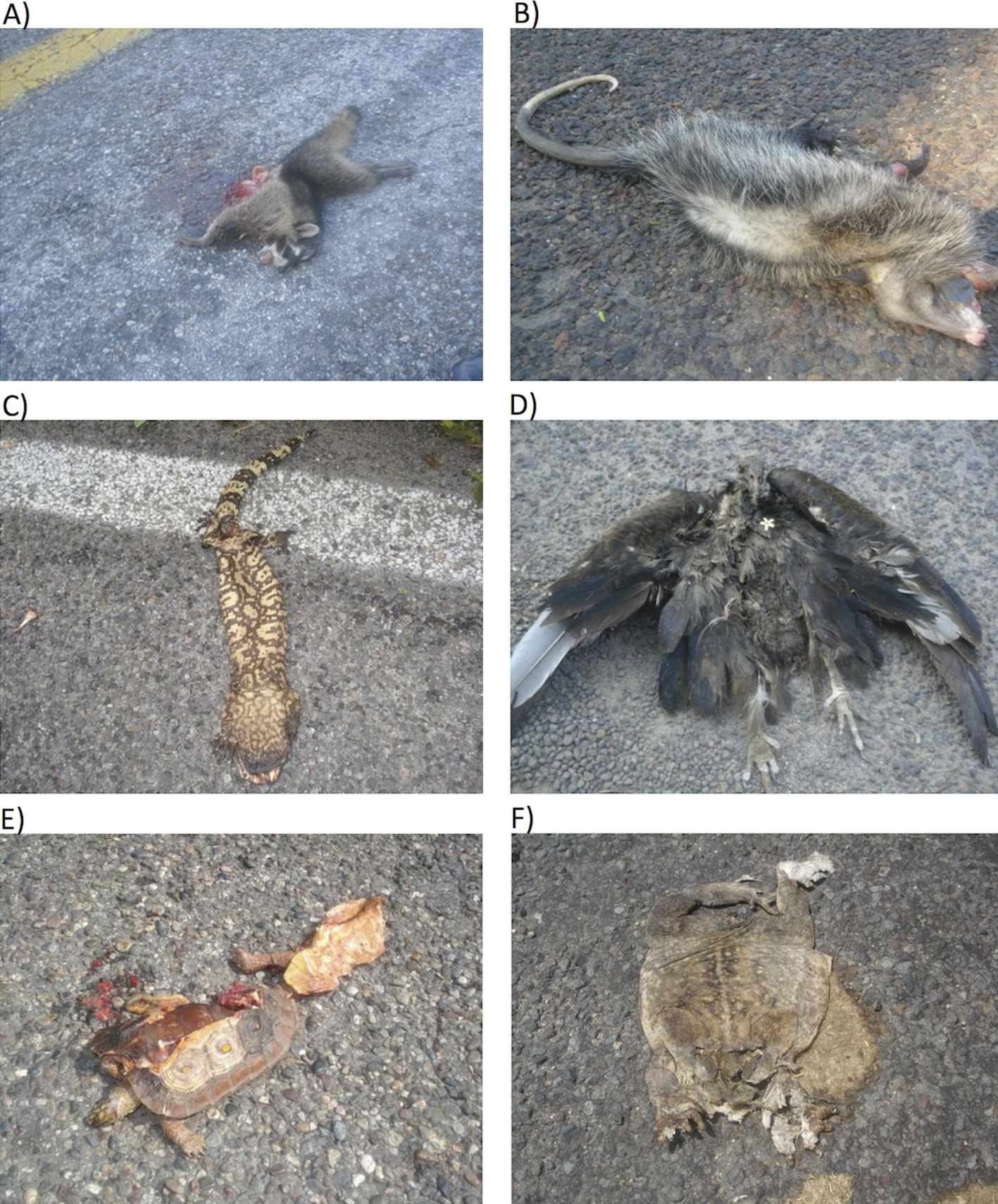
Table 2
Number of species observed, estimated number of species and sampling completeness by birds, reptiles and mammals assemblages’ killed as a consequence of impacts with vehicles in the western coast of Mexico.
|
Assemblage |
Number of observed species |
ICE |
Chao 2 |
Bootstrap |
Completeness |
|
Birds |
9 |
20.96 |
22.5 |
11.5 |
43-81 |
|
Reptiles |
16 |
18.38 |
16.34 |
17.86 |
87-98 |
|
Mammals |
13 |
15.22 |
13.68 |
14.4 |
85-95 |
The probability of an animal being killed on the road was similar for all the animal groups (Fig. 5, Table 2). However, we detected a significant negative relationship between road sinuosity and road kill probability. Moreover, we found a significant interaction between percentage of forest canopy cover and road sinuosity (Table 3). Therefore, our model indicated that the highest probability of a road kill was in sections of the road which combined a low sinuosity and greater forest coverage. In contrast, the frequency of animal road kills was lower in the sections of the road having a reduced forest cover and high sinuosity (Fig. 5).
When we used the number of road kills (CART analysis) as response variable, we found important differences among animal groups (Fig. 6, Tables 2, 3). First, we identified a major division between mammals and the remaining 3 groups (reptiles, birds and amphibians) in terms of the magnitude of road kills (r2 = 22%). A secondary division occurred between reptiles and amphibians and birds.
The main factor underlying these divisions of the tree was variation in road sinuosity. Therefore, those 10-km sections of the road with a sinuosity index > 1.15 had a lower abundance of killed animals, whereas road sections with sinuosity index < 1.15 had a greater abundance of killed animals. The CART analysis also indicated that human population density played a role in the division of road sections: those with a lower density (< 11.3 inhabitants/km2) showed a higher abundance of killed individuals (Fig. 6). While in contrast, road sections with a higher density (> 11.3 inhabitants/km2) had a lower number of killed individuals. The GLM supported the CART findings and indicated differences among groups of vertebrates. This analysis also indicated that population density and the sinuosity index were significant, but not their interaction (Fig. 7, Table 3). We found a negative relationship of the abundance with sinuosity and with population density. Specifically, the model predicted that those 10-km sections with higher sinuosity and low population density resulted in low abundances of killed animals. The higher abundances were predicted at low sinuosity (straight road sections) and low human population density (Fig. 7, Table 3).
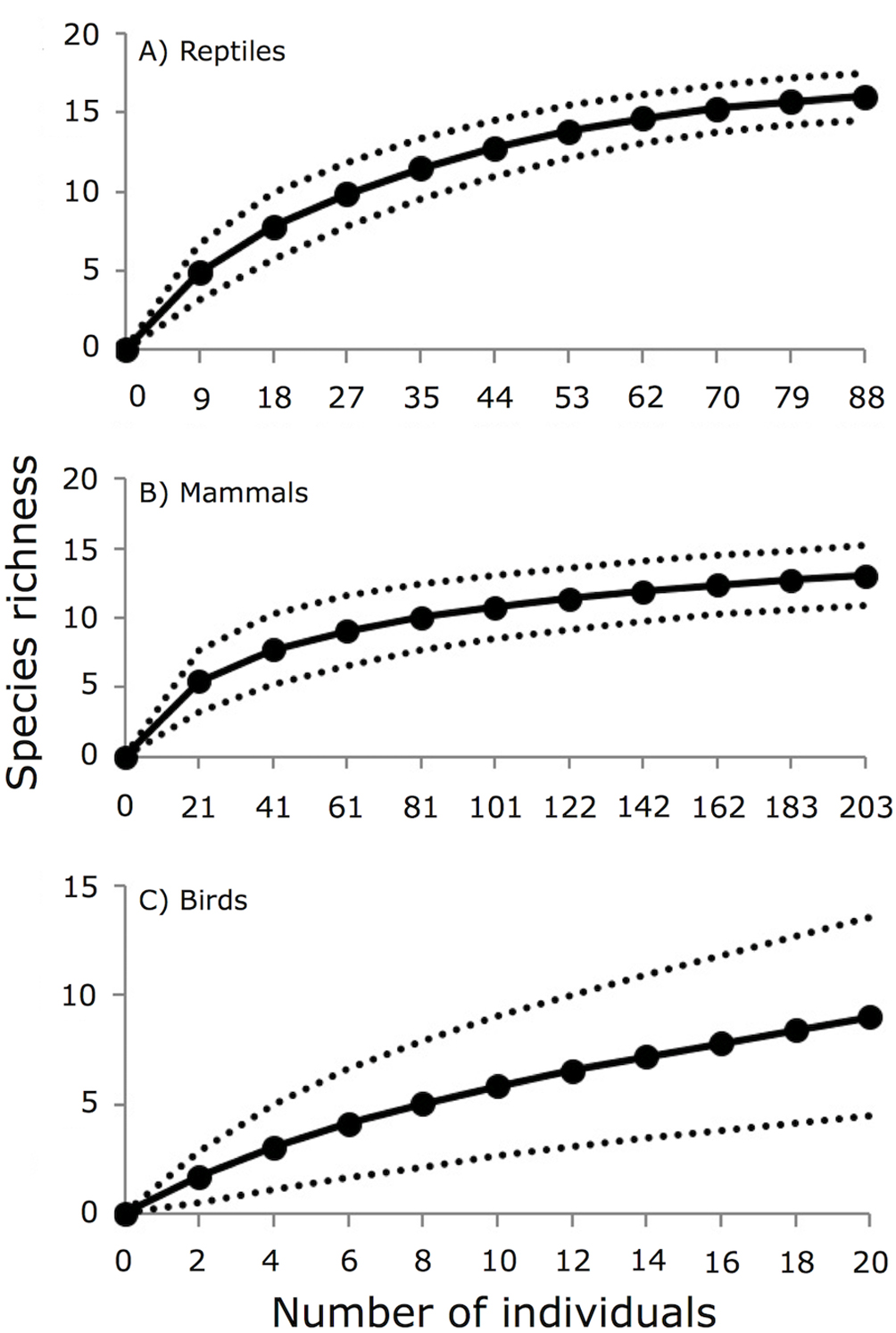
Discussion
We recorded a total of 314 animals killed as the result of collisions with vehicles during 10 one-day surveys. This represents an approximate of 31.4 deaths per day, which if multiplied by 365 gives a rough estimation of 11,461 animal kills per year. Our figures may represent an overestimation or underestimation depending on the relative impact of 2 non-exclusive factors: 1) one-day surveys were not consecutive always, the possibility exists that in some instances, daily records reflected the mortality accumulated over the course of several days, and 2) it has been shown that carcass removal by scavengers can be extremely fast and effective, causing disappearance of a large proportion (60-97%) of killed animals within 36 hours (Antworth et al., 2005; Teixeira et al., 2013).
Almost 24% of the species recorded were endemic to Mexico and 45% were identified as threatened or in need of special protection according to the country´s wildlife legal regulation (Semarnat, 2010). Among such fauna, mammals and reptiles were the most affected by road impact, exceeding up to 10 times the number of records for birds and amphibians. The observed contribution of mammals to the total number of road kills (65%), falls close to the upper extreme of the variation (8.14% to 67%) reported in other studies (Clevenger et al., 2003; Coelho et al., 2008; Grosselet et al., 2007; Ramp et al., 2006;
Taylor & Goldingay, 2004). On coastal roads in Oaxaca, another tropical area in Mexico, amphibians and reptiles were also the most affected vertebrates (Grosselet et al., 2007). Likewise, amphibians were the most impacted fauna by road kills in Florida (USA) and Santa Fe (Argentina) (Barichivich & Dood, 2002). In contrast, mammals were the most affected group in roads of Australia (Taylor & Goldingay, 2004). Among mammals, marsupials usually account for the highest number of road kills (Attademo et al., 2011; Delgado, 2007; Grosselet et al., 2007; and the present study), while toads and iguanas are the most affected among amphibians and reptiles, respectively (Grosselet et al., 2007). In the case of birds, we found that scavengers were the most affected. Specifically, the turkey vulture, C. aurea, whose attraction to dead animals on the road may explain why it is more prone to be impacted by vehicles.
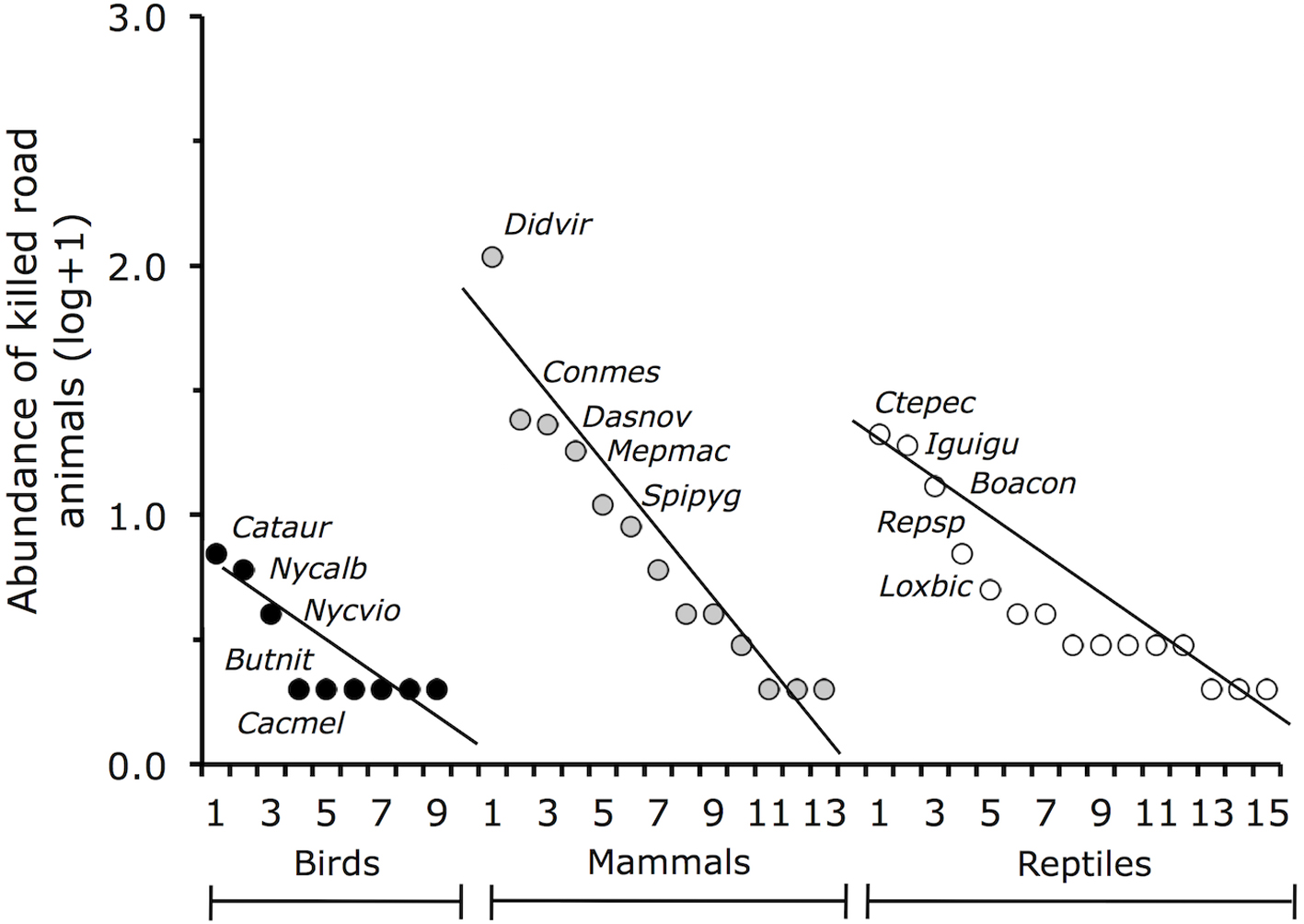
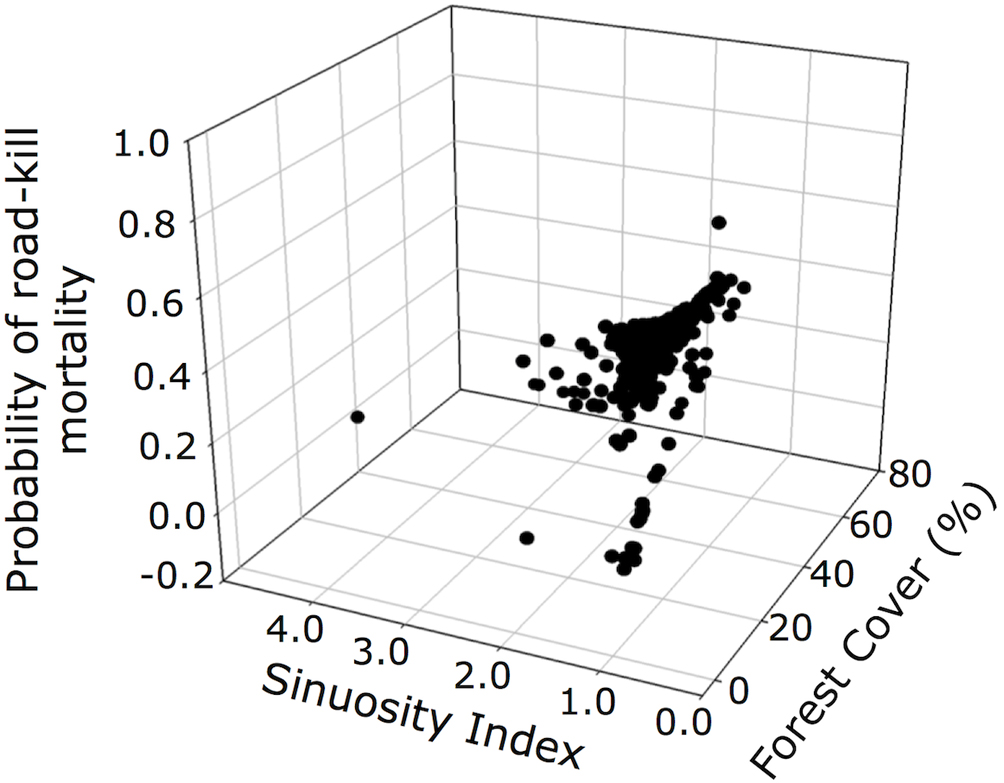
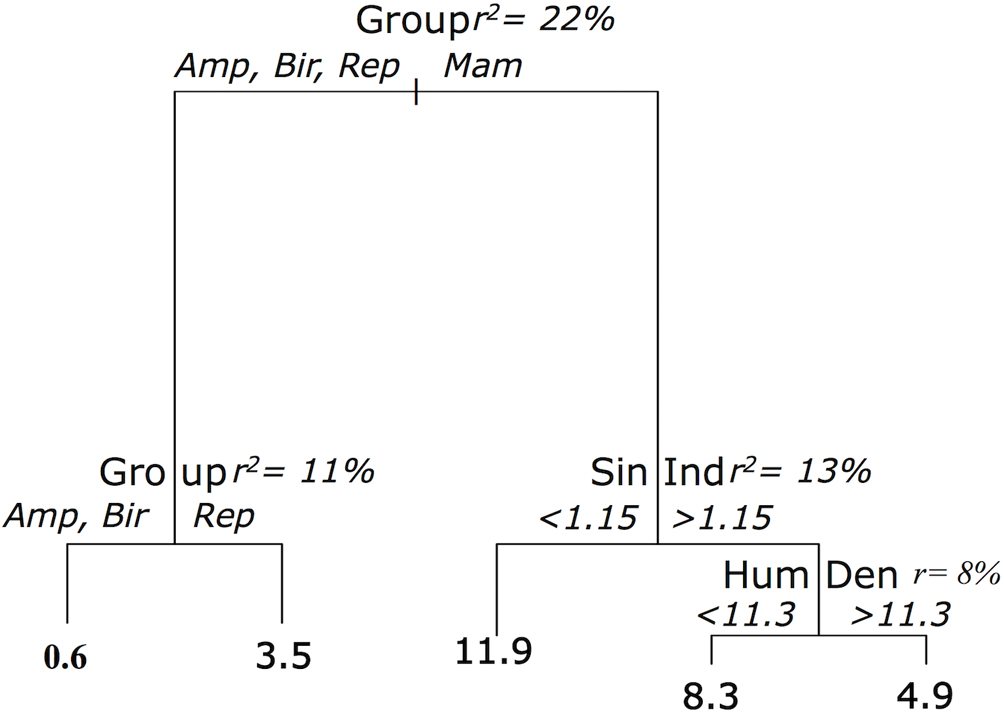
It has been shown that landscape features of roads have a clear influence on the species composition of animal kills (Bencke & Bencke, 1999). For example, proximity to wetlands seems to increase frequency of road impact on amphibians (Attademo et al., 2011; Smith & Dood, 2003). On the other hand, the proximity of roads to suburban and urban areas seems to increase mortality of mammals such as marsupials and bats (Bencke & Bencke 1999). In this study, road kills of opossums and the pygmy spotted skunks were especially frequent near suburban areas, were the landscape was modified by human activities such as agriculture and cattle ranching which seem to offer some resources for these species. All the species of reptiles and birds were vulnerable to vehicle collisions where coverage of dry forest was relatively high. Dry forest areas constitute important habitat for the species in these groups.
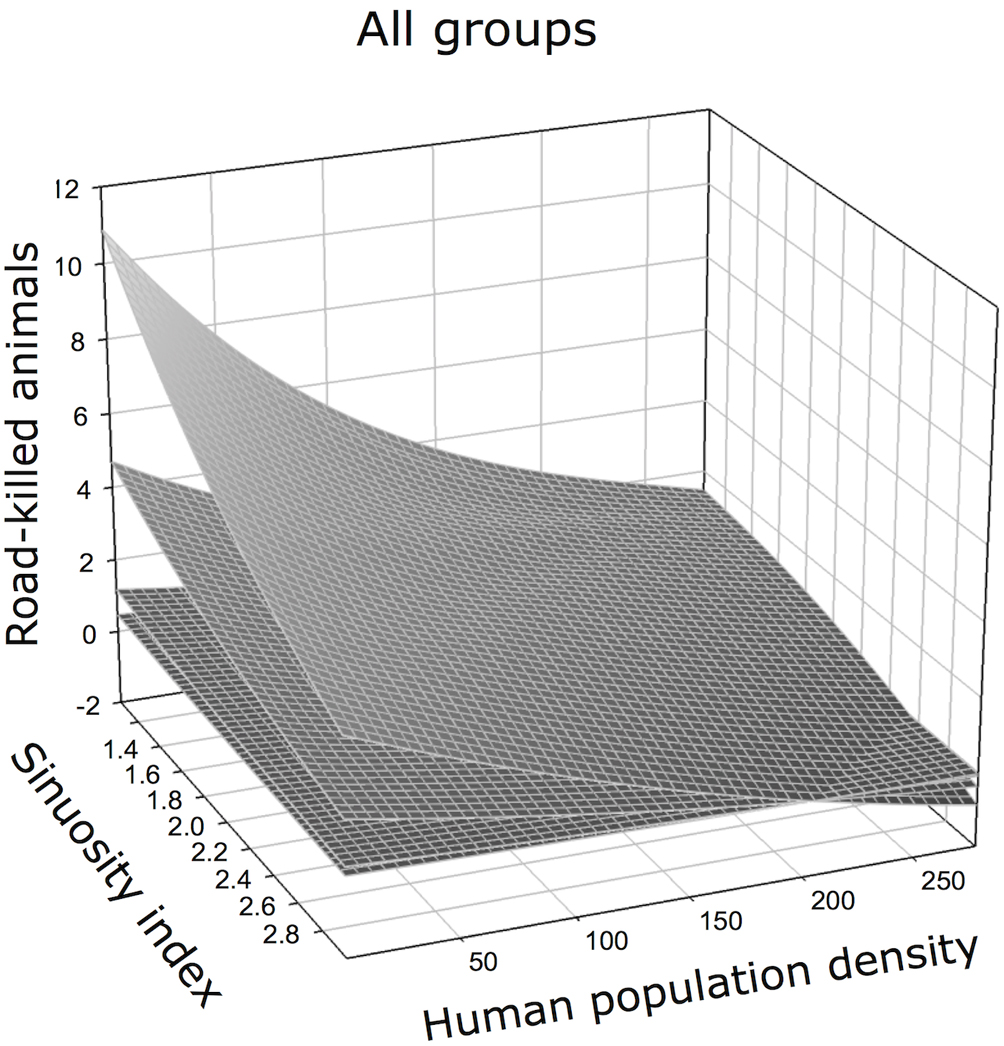
Road features are important to assess animal vulnerability to vehicle impact. We found road shape was associated to the frequency of animal kills with straight sections having a higher frequency of collisions than sections of the road where sinuosity was high. This effect was evident in cases involving mammals, reptiles and birds (there were not enough data on amphibians to conduct this analysis). This finding is likely related to the possibility of vehicles to reach higher speeds in straight sections of the highway (ca. 120 km/h). In comparison, vehicle speed is reduced to 50-60 km/h in sections of the road where curves are more frequent. On the other hand, despite that it was not possible to determine the exact time of the day in which each animal kill occurred the fact that several of the species had nocturnal habits suggest visibility might play an important role to increase risk of animals to be killed.
It stands out that road impact concentrates on a reduced group of species which likely share a common set of features that makes them more prone to be affected. This finding opens the possibility to design very specific conservation strategies which consider the ecology of these species.
Despite their reduced number, species affected by road kills included several of conservation concern. This suggests that increased implementation of roads in the region might have a very significant impact in terms of the local vertebrate diversity. On the other hand, our results allow us to suggest some specific actions for our study area which also might be useful for other regions: conservation efforts (e.g., signs, fences and overpasses) should be concentrated in straight sections of the road and in forested areas, as well as suburban areas (Ascensão et al., 2013; Crosby, 2014; Goosem, 2012; Oškinis et al., 2013). This protection should be focused on small mammals and reptiles, being the most sensitive groups. These strategies are urgent to reduce the great impact roads have on animal diversity.
Table 3
Results of generalized linear models (GLM) used to assess the effect of 4 different factors and their interaction (G, PD, SI, and FC) on probability of animals being killed and abundance of killed animals. The statistics are provided (χ2 values; degrees of freedom; and significance level, ns indicate non-significant effects). The table presents only significant terms and non-significant, were removed from the final model.
|
Probability |
Abundance |
|||||
|
Factor |
χ2 |
df |
p |
χ2 |
df |
p |
|
Group (G) |
– |
– |
ns |
26.9 |
3 |
< 0.001 |
|
Population Density (PD) |
– |
– |
ns |
16.87 |
1 |
< 0.001 |
|
Sinuosity Index (SI) |
12.3 |
1 |
< 0.001 |
7.1 |
1 |
0.04 |
|
Forest Cover (FC) |
1.6 |
1 |
ns |
– |
– |
ns |
|
FC:SI |
3.7 |
1 |
0.05 |
– |
– |
ns |
Acknowledgements
The authors thank the financial support provided by Coordinación de la Investigación Científica-Universidad Michoacána de San Nicolás de Hidalgo. Fernando Villaseñor Gómez and Oscar Medina helped with species identification. The community of Colola, Michoacán, gave full support to this study. Domingo Contreras, Israel Leyva and Obeth Mares, participated in the surveys and collection of road kills.
References
Antworth, R. L., Pike, D. A., & Stevens, E. E. (2005). Hit and run: effects of scavenging on estimates of roadkilled vertebrates. Southeast Naturalist, 4, 647–656.
Ascensão, F., Clevenger, A., Santos-Reis, M., Urbano, P., & Jackson, N. (2013). Wildlife–vehicle collision mitigation: Is partial fencing the answer? An agent-based model approach. Ecological Modelling, 257, 36–43.
Attademo, A. M., Peltzer, P. M., Lajmanovich, R. C., Elberg, G., Junges, C., Sanchez, L. C. et al. (2011). Wildlife vertebrate mortality in roads from Santa Fe Province, Argentina. Revista Mexicana de Biodiversidad, 82, 915–925.
Barichivich, W. J., & Dood, C. K. (2002). The effectiveness of wildlife barriers and underpasses on U.S. highway across Payne Prairie State Preserve, Alachua County, Florida. Phase II Post-Construction. Florida Department of Transportation Contract No. BB-854. Gainesville: Florida Department of Transportation.
Bencke, G. A., & Bencke, C. S. C. (1999). The potential importance of road deaths as a cause of mortality for large forest owls in southern Brazil. Cotinga, 11, 79–80.
Clevenger, A. P., Chruszcz, B., & Gunson, K. E. (2003). Spatial patterns and factors influencing small vertebrate fauna roadkill aggregations. Biological Conservation, 109, 15–26.
Coelho, I. P, Kindel, A., & Coelho, A. V. P. (2008). Roadkills of vertebrate species on two highways through the Atlantic Forest Biosphere Reserve, Southern Brazil. European Journal Wildlife Research, 54, 689–699.
Coffin, A. W. (2007). From roadkill to road ecology: a review of the ecological effects of roads. Journal of Transport Geography, 15, 396–406.
Colwell, R. K. (2013). Estimates: statistical estimation of species richness and shared species from samples, Version 9.1 Retrieved on December 15th 2016 from: http://purl.oclc.org/estimates
Correa, P. G. (1974). Geografía del estado de Michoacán. Tomo I. Geografía Física. Morelia: Gobierno del Estado de Michoacán.
Crosby, J. (2014). Amphibian occurrence on South Okanagan roadways: investigating movement patterns, crossing hotspots, and roadkill mitigation structure use at the landscape scale (Master thesis). University of Waterloo, Canada.
Crawley, M. J. (2012). The R book. Chichester: John Wiley & Sons Ltd.
De’ath, G., & Fabricius, K. E. (2000). Classification and regression trees: a powerful yet simple technique for ecological data analysis. Ecology, 81, 3178–3192.
Delgado, C. A. (2007). Roadway mortality of mammals on the El Escobero Road, Envigado (Antioquia), Colombia. Actual Biology, 29, 229–233.
DiMiceli, C. M., Carroll, M. L., Sohlberg, R. A., Huang, C., Hansen, M. C., & Townshend, J. R. G. (2011). Annual global automated MODIS vegetation continuous fields (MOD44B) at 250 m spatial resolution for data years beginning day 65, 2000 – 2010. Collection 5 Percent Tree Cover. College Park, MD, USA: University of Maryland.
Epps, C. W., Palsbøll, P. J., Wehausen, J. D., Roderick, G. K., Ramey, R. R., & McCullough, D. R. (2005). Highways block gene flow and cause a rapid decline in genetic diversity of desert bighorn sheep. Ecology Letters, 8, 1029–1038.
ESRI (2011). ArcGIS Desktop: Release 10. Environmental Systems Research Institute, Redlands, CA.
Fahrig, L, & Rytwinski, T. (2009). Effects of roads on animal abundance: an empirical review and synthesis. Ecology and Society, 14, 21.
Faraway, J. J. (2005). Extending the linear model with R: generalized linear, mixed effects and nonparametric regression models. Boca Raton: Chapman & Hall.
Forman, R. T. T., & Alexander, L. E. (1998). Roads and their major ecological effects. Annual Review of Ecology and Systematics, 29, 207–231.
Goosem, M. (2012). Mitigating the impacts of rainforest roads in Queensland’s wet tropics: effective or are further evaluations and new mitigation strategies required?. Ecology and Management Rest, 13, 254–258.
Grosselet, M., Villa-Bonilla, B., & Ruiz-Michael, G. (2007). Afectaciones a vertebrados por vehículos automotores en 1.2 km de carretera en el istmo de Tehuantepec. Actas del Cuarto Congreso Internacional Partners in Flight, February 13-16. McAllen, Texas.
Hels, T., & Buchwald, E. (2001). The effect of road kills on amphibian populations. Biological Conservation, 99, 331–340.
Izsák, J. (2006). Some practical aspects of fitting and testing the Zipf-Mandelbrot model. Scientometrics, 67, 107–120.
Inegi (Instituto Nacional de Estadística y Geografía). (2011a). Datos de relieve continental. Retrieved on September 15th 2016 from: http://www.inegi.org.mx/geo/contenidos/datosrelieve/continental/default.aspx
Inegi (Instituto Nacional de Estadística y Geografía). (2011b). Conjunto de datos vectoriales de carreteras y vialidades urbanas. Edición 1.0. Retrieved on December 15th 2016 from: http://www.inegi.org.mx/geo/contenidos/topografia/vectoriales_carreteras.aspx
IUCN (International Union for Conservation of Nature). (2010). IUCN Red list of threatened species. Version 2010.4. Retrieved on February 9th 2011 from: http://www.iuncredlist.org/
Laurance, W. F., Goosem, M., & Laurance, S. G. W. (2009). Impacts of roads and linear clearing on tropical forests. Trends in Ecology Evolution, 24, 659–669.
Mueller-Dombois, D., & Ellenberg, H. (1974). Aims and methods of vegetation ecology. New York: John Wiley and Sons.
Oškinis, V., Ignatavičius, G., & Vilutienė, V. (2013). An evaluation of wildlife-vehicle collision pattern and associated mitigation strategies in Lithuania. Environmental Engineering and Management Journal, 12, 2323–2330.
Parris, K. M., & Schneider, A. (2009). Impacts of traffic noise and traffic volume on birds of roadside habitats. Ecology and Society, 14, 29.
Parris, K. M., Velik-Lord, M., & North, J. M. A. (2009). Frogs call at a higher pitch in traffic noise. Ecology and Society, 14. Available: http://www.ecologyandsociety.org/vol14/iss1/art25/
R Development Core Team. (2013).. R: a language and environment for statistical computing. Ver 3.02. R Foundation for Statistical Computing, Retrieved on September 23th, 2016 from http://www.R-project.org
Ramp, D., Wilson, V. K., & Croft, D. B. (2006). Assessing the impacts of roads in peri-urban reserves: oad-based fatalities and road usage by wildlife in the Royal National Park, New South Wales, Australia. Biological Conservation, 129, 348–359.
Ripley, B. (2010). Package ‘Tree’ for R: classification and regression trees. Version 1.0-28
Roedenbeck, I. A., Fahrig, L., Findlay, C. S., Houlahan, J. E., Jaeger, J. A., Klar, N. et al. (2007). The Rauischholzhausen agenda for road ecology. Ecology and Society, 12, 11.
Semarnat (Secretaría del Medio Ambiente y Recursos Naturales). (2010). Norma Oficial Mexicana NOM-059-SEMARNAT2010. Protección ambiental. Especies nativas de México de flora y fauna silvestres -Categorías de riesgo y especificaciones para su inclusión, exclusión o cambio. Lista de especies en riesgo. Diario Oficial de la Federación. 2da Sección, 30 de diciembre de 2010.
Smith, L. L., & Dodd, C. K. (2003). Wildlife mortality on highway US 441 across Paynes Prairie, Alachua County, Florida. Florida Scientist, 66, 128–140.
Spellerberg, I. F. (1998). Ecological effects of roads and traffic: a literature review. Global Ecology and Biogeography, 7, 317–333.
Taylor, B. D., & Goldingay, R. L. (2004). Wildlife road-kills on three major roads in North-eastern New South Wales. Wildlife Research, 31, 83–91.
Teixeira, F. Z., Coelho, A. V. P., Esperandio, I. B., & Kindel, A. (2013). Vertebrate road mortality estimates: effects of sampling methods and carcass removal. Biological Conservation, 157, 317–323.
Trombulak, S., & Frissell, C. A. (2000). Review of ecological effects of roads on terrestrial and aquatic communities. Conservation Biology, 14, 18–30.
Van der Ree, R., Jaeger, J. A. G, Van der Grift, E. A., & Clevenger, A. P. (2011). Effects of roads and traffic on wildlife populations and landscape function: road ecology is moving toward larger scales. Ecology and Society, 16, 48–48.
Van der Ree, R., Smith, D. J., & Grilo, C. (2015). The ecological effects of linear infrastructure and traffic. In R. Van der Ree, D. J. Smith, & C. Grilo (Eds.), Handbook of road ecology (pp. 1–10). Chichester, UK: John Wiley & Sons, Ltd.

